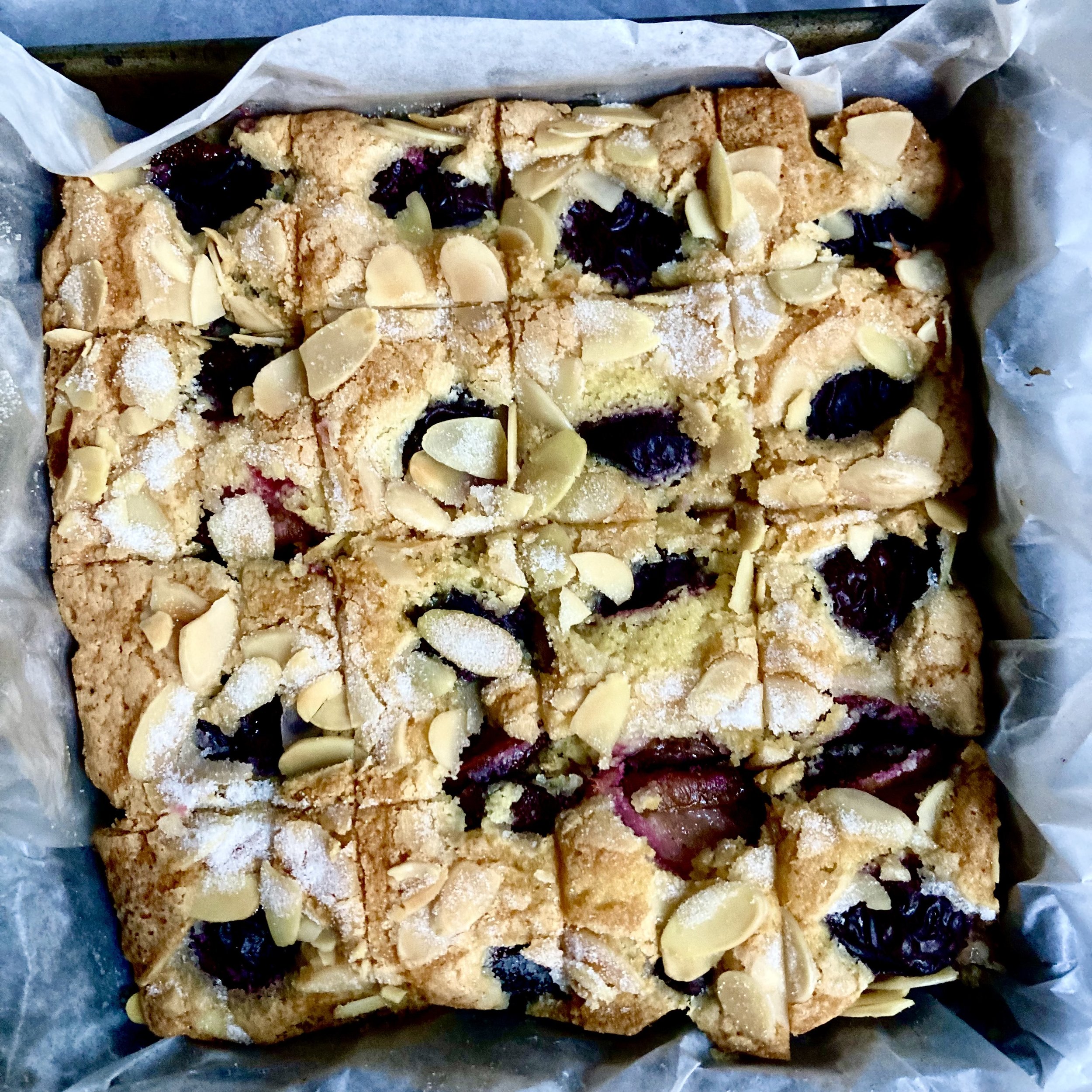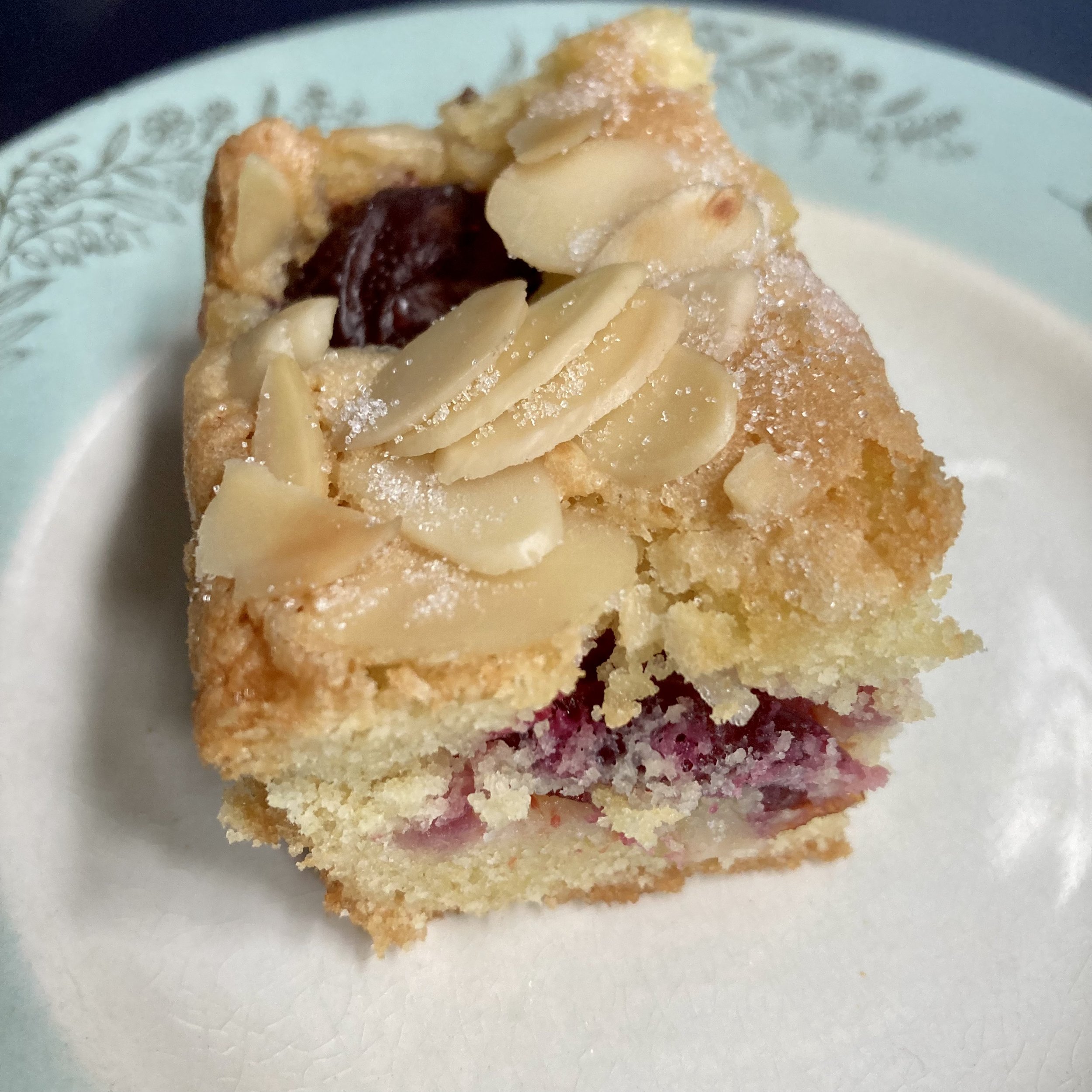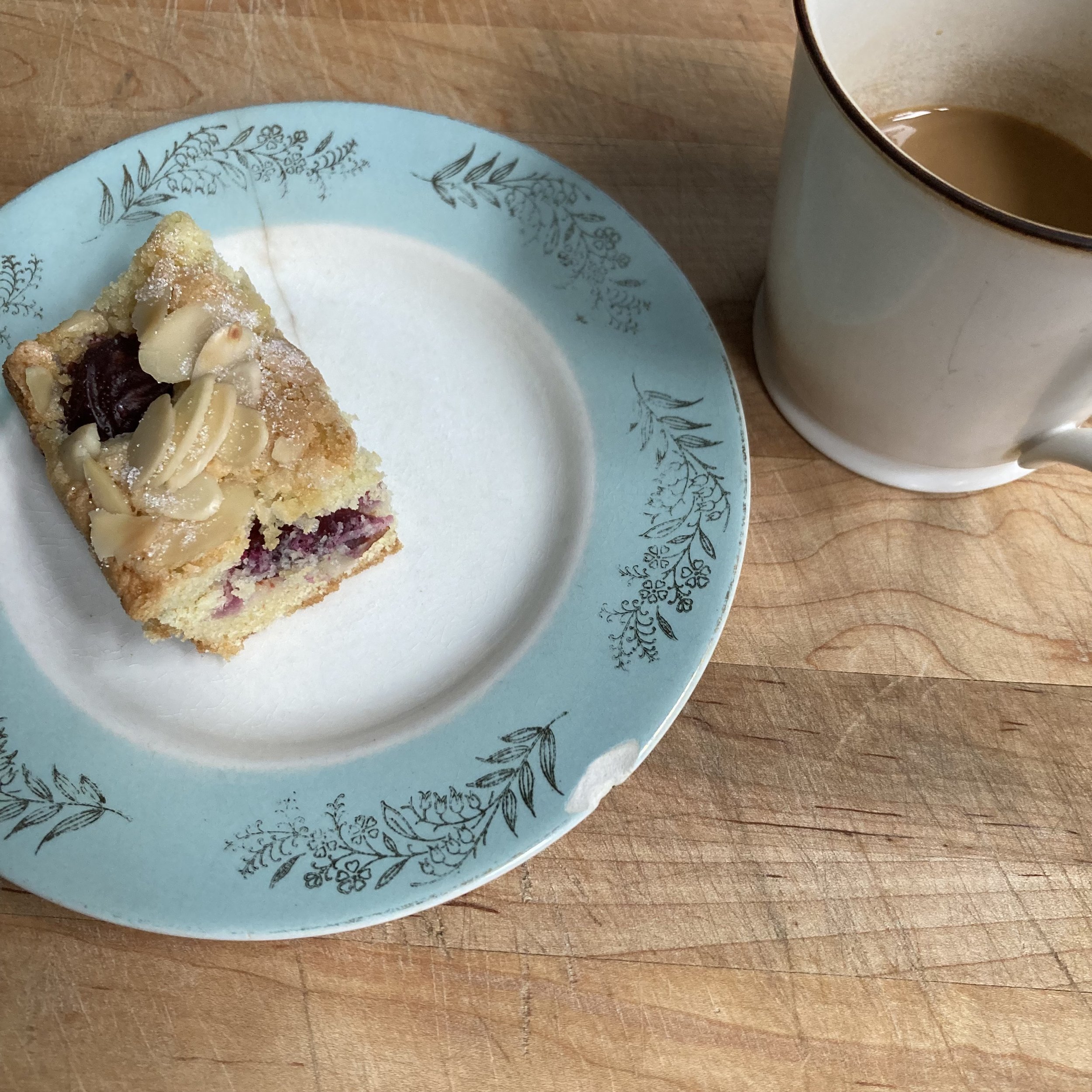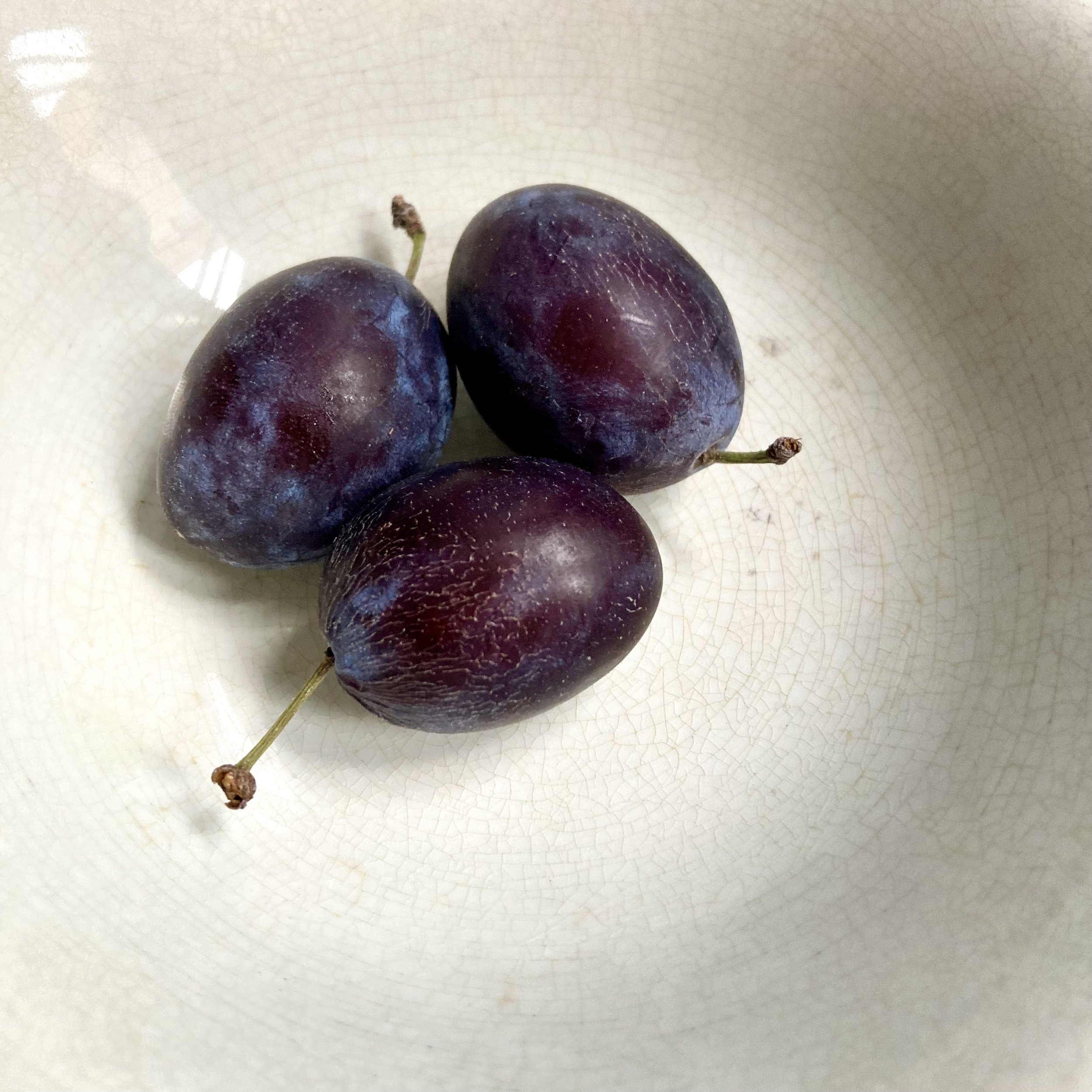Of course, Vermont’s sweet potato season has been over for a while, but you can still find cellared organic sweet potatoes kicking and around from time to time, not to mention conventional garnet varieties imported from Down South, some of which are still quite excellent.
There’s truly nothing like the taste of a Grade A sweet potato—especially a locally grown, organic one—when it’s been properly baked, bursting with syrup and luscious on the inside. Every time I taste a really good one I’m reminded of a pivotal scene from Ralph Ellison’s Invisible Man (1952), a passage that, in my opinion, stands as one of the single greatest treatments of food in the history of literature. The Nancy Hall is a sweet potato famed for its Proustian powers of suggestion, for its ability to conjure memories of fabled meals from one’s Southern childhood. You can feel those powers in Ellison’s vivid prose. And part of what makes the experience so profound for the narrator—the titular “invisible man”—is that he encounters these “yams”*** in the winter cold, on the snowy streets of Harlem—a quintessential rural Southern flavour relocated to the urban Northern context courtesy of the Great Migration. When he does, they function as a balm at a particularly low point in his life, but they’re also a poignant reminder of the “invisible man’s” status in New York, and in America more generally. The novel’s stirring and evocative treatment of race and class is captured here in full effect. And if there’s an account of the essence of true street food that’s more beautifully written than this one, I haven’t encountered it.
I… walked along, becoming aware that I was muttering to myself again. Then far down at the corner I saw an old man warming his hands against the sides of an odd-looking wagon, from which a stovepipe reeled off a thin spiral of smoke that drifted the odor of baking yams slowly to me, bring a stab of swift nostalgia. I stopped as thought struck by a shot, deeply inhaling, remembering, my mind surging back, back. At home we’d bake them in the hot coals of the fireplace, had carried them cold to school for lunch, munched them secretly, squeezing the sweet pulp from the soft peel as we hid from the teacher behind the largest book, the World’s Geography. Yes, and we’d loved them candied, or baked in a cobbler, deep-fat fried in a pocket of dough, or roasted with pork and glazed with well-browned fat; had chewed them raw—yams and years ago. More yams than years ago though the time seemed endlessly expanded, stretched thin as the spiralling smoke beyond all recall.
I moved again. “Get yo’ hot, baked Carolina yam,” he called. At the corner the old man, wrapped in an army overcoat, his feet covered with gunny sacks, his head in a knitted cap, was puttering with a stack of paper bags. I saw a crude sign on the side of the wagon proclaiming YAMS, as I walked flush into the warmth thrown by the coals that glowed in a grate underneath.
“How much are your yams?” I said, suddenly hungry.
“They ten cents and they sweet,” he said, his voice quivering with age. “These ain’t none of them binding ones neither. These here is real, sweet yaller yams. How many?”
“One,” I said. “If they’re that good, one should be enough."
He gave me a searching glance. There was a tear in the corner of his eye. He chuckled and opened the door of the improvised oven, reaching gingerly with his gloved hand. The yams, some bubbling with syrup, lay on a wire rack above the glowing coals that leaped to low blue flame when struck by the draft of air. The flash of warmth set my face aglow as he removed one of the yams and shut the door.
“Here you are, suh,” he said, starting to put the yam into a bag.
“Never mind the bag. I’m going to eat it. Here…”
“Thanks.” He took the dime. “If that ain’t a sweet one, I’ll give you another one free of charge.”
I knew it was sweet before I broke it; bubbles of brown syrup had burst the skin.
“Go ahead and break it,” the old man said. “Break it and I’ll give you some butter since you gon’ eat it right here. Lots of folks take ‘em home. They got their own butter at home.”
I broke it, seeing the sugary pulp steaming in the cold.
“Hold it over here,” he said. He took a crock from a rack on the side of the wagon. “Right here.”
I held it, watching him pour a spoonful of melted butter over the yam and the butter seeping in.
“Thanks.”
“You welcome. And I’ll tell you something.”
“What’s that?” I said.
“If that ain’t the best eating you had in a long time, I give you your money back.”
“You don’t need to convince me,” I said. “I can look at it and see it’s good.”
“You right, but everything that looks good ain’t necessarily good,” he said. “But these is.”
I took a bite, finding it as sweet and hot as any I’d ever had, and was overcome with such a surge of homesickness that I turned away to keep my control. I walked along, munching the yam, just as suddenly overcome by an intense feeling of freedom—simply because I was eating while walking along the street. It was exhilarating. I no long had to worry about who saw me or about what was proper. To hell with all that, and as sweet as the yam actually was, it became like nectar with the thought[…]
[…To] hell with being ashamed of what you liked. No more of that for me. I am what I am! I wolfed down the yam and ran back to the old man and handed him twenty cents. “Give me two more,” I said.
“Sho, all you want, long as I got ‘em. I can see you a serious yam eater, young fellow. You eating them right away?”
“As soon as you give them to me,” I said.
“You want ‘em buttered?”
“Please.”
“Sho, that way you can get the most out of ‘em. Yessuh,” he said, handing over the yams, “I can see you one of these old-fashioned yam eaters.”
“They’re my birthmark,” I said. “I yam what I am!”
[Ralph Ellison, Invisible Man (1952), Chapter 13]
The wagon, the smoke, the coals, the skin, the syrup, the pulp, the butter, the steam, the street, the expertise, and the homesickness--it's all there.
Now, I’m positive I couldn’t make the same claim with any sense of validity--they're not my birthmark; neither of my grandmothers prepared them; my earliest recollections of sweet potatoes were part of the fairly typical Thanksgiving meals I experienced in childhood--but few foods provide me with as elemental a sense of pleasure as a baked sweet potato. It’s like the old man said: “If that ain’t the best eating you had in a long time, I give you your money back.” I'm fortunate enough that I’ve been able to do quite a bit of good eating recently, but no dish was as simple, and none better.
aj
* This is not to disparage Montreal's vibrant food market culture. There's no shortage of variety and no shortage of accompanying aficionados, it's just that sweet potatoes and sweet potato-philia are in short supply.
** For instance, they don’t appear a single time in Jonathan Norton Leonard’s American Cooking: New England (1970), and they’re only featured in a few recipes in Evan and Judith Jones’s The L.L. Bean Book of New New England Cookery (1988) and are never given the spotlight the way other typical New England ingredients like apple cider (in all its forms), maple syrup, and corn are.
*** Though sweet potatoes are often referred to as “yams” in North America, this is a case of mistaken identity. As Alan Davidson explains, the terms are used to distinguish lighter-coloured, “firm” varieties of sweet potatoes from darker, “soft” ones: “The flesh of the soft ones is apt to be orange, and that of the firm ones white or yellow. In the USA the soft kind is sometimes called “yam;” a misnomer, as the true YAM is a different plant.”







